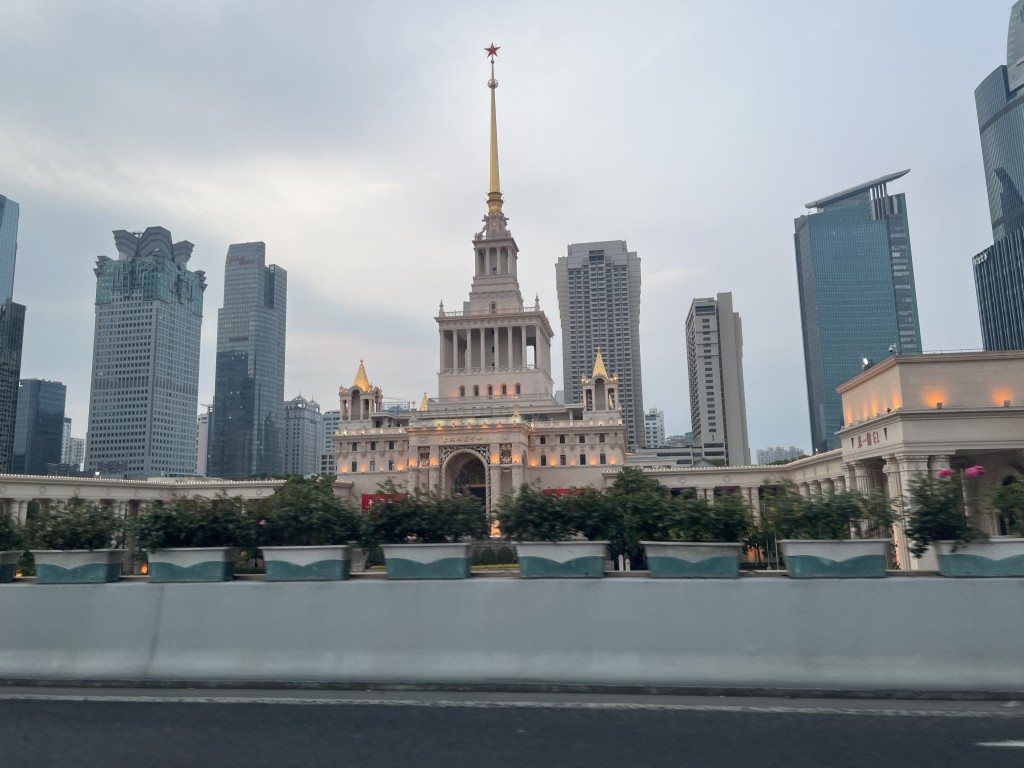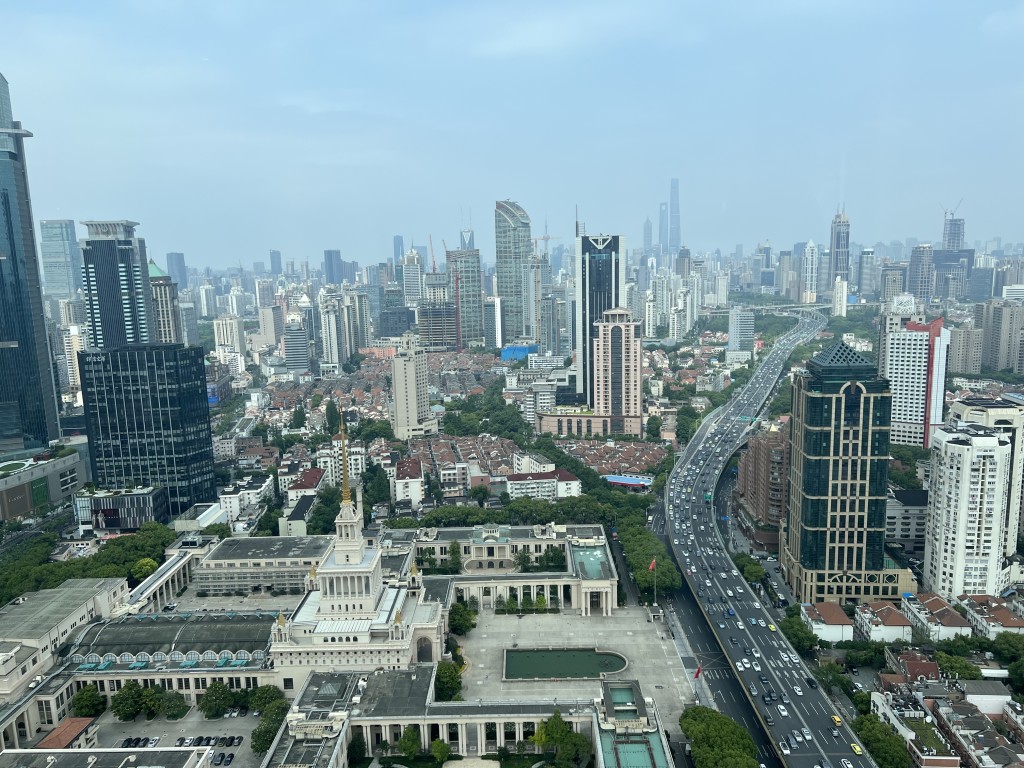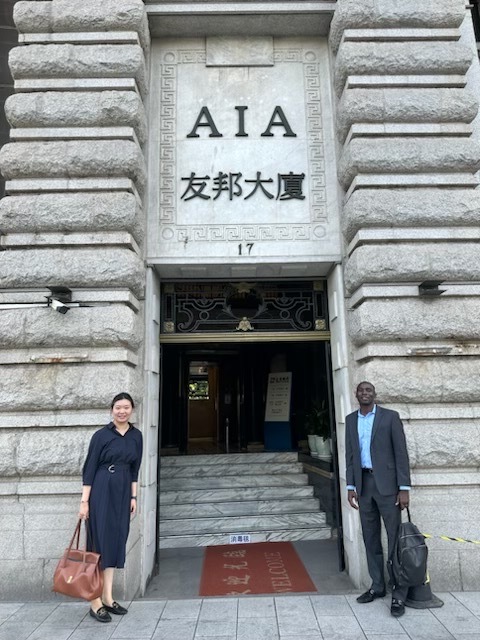Contributors
Related Articles
Since the end of the pandemic lockdown, our analysts and portfolio managers have gone back on the road, meeting with business owners, policymakers, suppliers, and consumers. Our first-hand observations of the economic and social climate strengthens the quality of our research and helps us generate insights. In this series, On the Road, we share the findings uncovered by our on-the-ground research.
Members of our research team visited China for the first time since 2019, before the start of the coronavirus pandemic and China’s move to more heavily regulate its technology sector. We aimed to gauge the medium- to long-term direction of the country to assess whether it is still an attractive investment destination for our Emerging Markets Growth (EMG) strategy.
We held more than 80 meetings with companies, experts, sell-side analysts, and buy-side contacts in the consumer, insurance, electric vehicle and batteries, industrials, and internet industries in 14 cities. We found evidence of many changes in the investment environment resulting from the economic impact of the pandemic as well as increased government regulation of businesses.
While we believe the opportunity set for growth investors in China has narrowed, we continue to see attractive businesses across sectors, and we are more constructive on areas such as renewable energy and industrial automation that are more aligned with the future policy and economic direction of the country. Overall, we believe that a nimbler and more selective approach to investing in China is required. This is consistent with an economy in transition that’s prioritizing the quality over the quantity of economic growth.
Our questions about the viability of investing in the country have grown over the past two to three years as the risks and uncertainties of investing in the region increased meaningfully. A convergence of several headwinds, including regulatory pressure on the tech/internet sectors, mobility restrictions to contain the coronavirus pandemic, and deteriorating geopolitical relationship between china and the United States has negatively affected investor sentiment and contributed to a period of relative underperformance by the Chinese stock market. For better or for worse, China is a country that has a history of transformative changes, so we should remain engaged and constantly reassess our current position based on the facts on the ground and the broader global environment. Below we also share our views of the macroeconomic backdrop, which is important to consider when investing in emerging markets.
Assessing our Exposure | |
|---|---|
China exposure in our EMG portfolio is about 16 percent (about 20 percent if we include our holdings listed in Hong Kong,) , well below China’s 30 percent weight in the benchmark, the MSCI Emerging Markets Index. At the portfolio level, we are constantly reassessing three key questions: 1. Is China investable relative to our investment criteria? 2. What should our strategic allocation to China be? 3. If China is investable, which sectors and companies offer us the best growth opportunities and the greatest potential for positive investment outcomes over the next three to five years?
1. Is China investible? Yes!
China is a core part of the emerging markets opportunity set. Despite its ongoing challenges, it remains a large and flourishing economy. Visiting China in person let us see this dynamism firsthand.
Some highlights of what we saw: the accelerating pace of electrification in the auto sector; the growing aspirations of an increasingly affluent urban middle class with significant spending power; and the daring entrepreneurs looking for opportunities to expand their businesses despite many challenges.
In traveling across China by road, rail, and air, we experienced the world-class infrastructure that China has built over the past two to three decades. Infrastructure remains a source of competitive advantage for China Inc. in the global manufacturing and export markets. More importantly for our strategies, China continues to produce world-class businesses, in our view, such as consumer brands and companies in the electric-vehicle supply chain that meet our investment criteria.
2. What should EMG’s strategic allocation to China be?
While we continue to think that China is investable, it is increasingly less attractive relative to India, Indonesia, and other emerging market (EM) regions. China is a country and an economy that is transitioning from a middle-income to an advanced economy, which requires substantive changes to the economic model that has been in place for the past 40 years. But changing domestic politics and worsening geopolitics complicates China’s options and path toward achieving its long-term economic objectives. For example, the tech war with the United States will likely slow—even if it doesn’t completely derail—China’s ambition to become an advanced industrial nation. The challenges and uncertainties—for businesses and investors—created by China’s ongoing transition are substantial and justify a strategic underweight in EMG, in our view.
3. In which sectors/businesses should we seek to invest?
Overall, we don’t see a short-term need to make substantial changes to our China holdings in the EMG portfolio. The investing opportunity set has narrowed gradually over the last several years, with tech and internet, which was historically a big part of EMG China exposure and most other EM portfolios, now largely a matured and overregulated sector. We see potential investment opportunities, such as renewable energy and industrial automation, in the broader advanced manufacturing sector. We continue to see select opportunities in consumer staples, consumer discretionary, healthcare services, financial services, tech, and information technology. Some of these are businesses currently owned in EMG, or they are in our new opportunities pipeline. Generally, the Chinese state is using a heavier hand in allocating capital to favored areas such as artificial intelligence, high tech, and advanced manufacturing. At the same time, it is more willing to let sectors that have historically contributed meaningfully to gross domestic product (GDP) growth–such as real estate—suffer. This reflects the economic policy shift toward high-tech industries and manufacturing away from highly leveraged and low-productivity legacy sectors.
Other Observations, Challenges, and Opportunities |
|---|
Mixed investor sentiment:
We have seen some global funds exit their China exposure, perhaps because they view China as uninvestable. Other emerging market growth managers have significantly reduced their position as well. Some global value funds view China as more attractive due to the significant valuation discount. Domestic funds generally sound more optimistic and are less worried about the situation. The onshore market is heavily retail-driven (70 percent of volume) and remains very oriented to the short term.



The Macroeconomic Backdrop | |
|---|---|
Slowing economic growth:
China’s GDP growth will likely slow over the next few years compared with the pre-pandemic period. This slowing will likely result from a combination of government priority changes and structural challenges. The government’s goal has shifted to “quality growth” driven mainly by consumption, services, and higher-skilled industrial/manufacturing instead of the investment-heavy and debt-fueled growth of the past. Accordingly, the government has removed GDP growth targets, tried to restrain excessive local government spending, and triggered a healthy—albeit painful in the short term—contraction and consolidation of the real estate sector. The country’s leadership recognizes that it faces its greatest challenge since the start of the reform and opening era that has taken China from a “poor” to a “middle-income” country since about 1978. But advancing China from a $10,000 to a $30,000-plus per capita income economy—in other words, from a “middle-income” to a “developed” economy—will be more daunting.
A challenging road to “developed” economy:
The next phase of China’s economic transition will be much harder because the country benefited from several one-time factors that accelerated the pace of economic growth over the last 40 years that are not repeatable—or can only make limited contributions—going forward. These include China’s transformation from a mostly rural/agrarian economy to an industrialized/manufacturing economy helped by a population exodus from low-productivity agriculture to high-productivity industry, massive inflows in foreign capital (foreign direct investment, portfolio investments, technology, skill, experience, etc.), and the opening of various previously closed business sectors to the private sector. All of these contributed to a better allocation of labor, capital, and other resources, in addition to a steep and sustainable rise in productivity, higher wages (and per capita income), and a virtuous and self-sustaining cycle of higher consumer spending driving business expansion. But this phase of economic expansion has reached its limits, so China’s future economic trajectory will require more innovation and advanced technology, highly skilled labor, value-adding manufacturing products, and greater incentives for entrepreneurs to take risks to improve productivity, employment, and global competitiveness.
In general, the China-based macroeconomic experts we met believe that the government’s instincts are good but its ability to achieve the desired outcome is challenged by the realities discussed below.
Policy and regulatory environment:
We perceive that foreign investors in China have grown increasingly concerned by the centralization of political authority and the erosion of technocrats’ role in policymaking. This perception, combined with greater regulatory scrutiny of several key business sectors, has raised doubts about China’s status as a business-friendly environment.
We heard that sectorwide crackdowns are largely behind us, and regulatory intensity is unlikely to escalate. The Chinese government has consistently repeated that China is open for business and welcomes foreign investment. Tesla is an example of a successful foreign company in China that continues to grow and expand its operations in China even through the last three to four years of pandemic and geopolitical challenges. But other foreign businesses have complained about greater scrutiny and constraints on their day-to-day operations in the name of national security. The recent performance of Chinese investment assets indicates that foreign investors remain doubtful. It will take actions from policymakers, as well as supportive words, to relieve such doubts.
Structural challenges:
China faces structural problems, such as high unemployment, an aging population, and a low birth rate. An urgent and more pressing challenge is the high level of youth unemployment—about 20 percent—that is a drag on economic output and raises the government’s anxiety about social stability. While these challenges are not insurmountable, they limit the policy options available to the leadership.
Geopolitics:
China’s deteriorating relationship with the United States and its allies has heightened its national security concerns in domestic policies and international relations, which could complicate long-term economic and business priorities. This sometimes results in policy actions that seemingly work against the country’s broader economic objectives. For example, the recent crackdown on foreign consulting firms in the name of national security happened around the time that China’s leadership touted the country as being open for business and welcoming foreign investors.
Tech war:
The restriction of China’s access to certain high-tech products (such as semiconductors) by the United States and its allies will inevitably slow the pace at which China is able to develop a high-skill-based manufacturing sector that can compete with those of developed nations. It is also likely to hurt China’s ability to use higher labor productivity, higher wages (and per capita income), and higher consumer spending to escape the “middle-income trap” caused by higher wages.
Attracting foreign capital:
The risks inherent in China’s changing domestic politics and an increasingly confrontational relationship with the West (the main source of foreign capital into China over the last three decades) are creating many uncertainties for international investors, in addition to making them increasingly more cautious toward investing in China—both in terms of portfolio investment and foreign direct investment. All of this is happening as China arguably needs foreign capital more than ever as it transitions its growth model to depend less on government-led investment. The international business community doesn’t seem inclined to fully divest from China, but it also understands it must manage the geopolitical risks. Members are also hesitant about being too vocal about their support for China as that often doesn’t play well in the domestic politics of their home countries.
Overall, this justifies a more cautious medium- to long-term outlook and the EMG strategy’s strategic underweight to China. But the situation is still in flux and could change for the better or worse. We should be open to changing our position in either case. As things stand, the risks and uncertainties of investing in China are partly offset by a few considerations discussed below.
The social compact appears intact:
The legitimacy of the Chinese Communist Party and the Chinese government ultimately depends on the average Chinese citizen continuing to materially improve their living conditions. The Chinese people aspire to be as wealthy and advanced as citizens of Western nations or nearby Asian Tigers (Korea, Taiwan, Singapore). All the local experts and entrepreneurs we interacted with believe this social compact remains intact and that there is a deep commitment by the leadership to deliver on this. A note of caution, though, is that actions taken by the leadership in recent years indicate a willingness to forgo these objectives in the short to medium term as it addresses other priorities deemed more pressing. For example, recent harsh COVID-19-related lockdown policies prioritized saving lives and ensuring the leadership looks strong and effective rather than prioritizing economic growth. We also expect the leadership to deprioritize short-term economic growth in the face of what it might consider national security concerns. However, the rapid turnaround in coronavirus-related policies and the abrupt opening of the economy in December 2022 support the idea that the leadership can be pragmatic and receptive to popular opinion, especially when social and political stability is at risk.
Large upper middle class with considerable wealth:
Durable competitive advantages for China Inc.:
China has several advantages that will help support its leadership in global manufacturing and exports. These are mainly infrastructure (transportation, telecommunication, etc.), an educated and skilled labor force (tens of millions of young people graduating college every year), a lot of accumulated wealth and entrepreneurship to support new growth industries, a highly technocratic and experienced civil service, and strong state institutions even if they are more centralized and differ from liberal democracies. The China electric vehicle supply chain is a good example of how China has harnessed these advantages to attain global leadership in one of the leading growth industries of the future.
1 Goldman Sach, China Data Insights, FAQs in “excess savings” in China, February 7, 2023.
Disclosures:
You should not assume that any investment is or will be profitable. The views expressed are the opinion of Sands Capital and are not intended as a forecast, a guarantee of future results, investment recommendations, or an offer to buy or sell any securities. The views expressed were current as of the date indicated and are subject to change. This material may contain forward-looking statements, which are subject to uncertainty and contingencies outside of Sands Capital’s control. All investments are subject to market risk, including the possible loss of principal. Readers should not place undue reliance upon these forward-looking statements. There is no guarantee that Sands Capital will meet its stated goals. Past performance is not indicative of future results. As of July 26, 2023, Tesla was not owned in and Sands Capital strategies.
References to “we,” “us,” “our,” and “Sands Capital” refer collectively to Sands Capital Management, LLC, which provides investment advisory services with respect to Sands Capital’s public market investment strategies, and Sands Capital Ventures, LLC, which provides investment advisory services with respect to Sands Capital’s private market investment strategies, which are available only to qualified investors. As the context requires, the term “Sands Capital” may refer to such entities individually or collectively.
As of October 1, 2021, Sands Capital was redefined to be the combination of Sands Capital Management, LLC and Sands Capital Ventures. Both firms are registered investment advisers with the United States Securities and Exchange Commission in accordance with the Investment Advisers Act of 1940. The two registered investment advisers are combined to be one firm and are doing business as Sands Capital. Sands Capital operates as a distinct business organization, retains discretion over the assets between the two registered investment advisers, and has autonomy over the total investment decision-making process.
Information contained herein may be based on, or derived from, information provided by third parties. The accuracy of such information has not been independently verified and cannot be guaranteed. The information in this document speaks as of the date of this document or such earlier date as set out herein or as the context may require and may be subject to updating, completion, revision, and amendment. There will be no obligation to update any of the information or correct any inaccuracies contained herein.
This material is for informational purposes only and does not constitute an offer, invitation, or recommendation to buy, sell, subscribe for, or issue any securities. The material is based on information that we consider correct, and any estimates, opinions, conclusions, or recommendations contained in this communication are reasonably held or made at the time of compilation. However, no warranty is made as to the accuracy or reliability of any estimates, opinions, conclusions, or recommendations. It should not be construed as investment, legal, or tax advice and may not be reproduced or distributed to any person.
In the United Kingdom, this communication is issued by Sands Capital Advisors – UK Ltd (“Sands UK”) and approved by Robert Quinn Advisory LLP, which is authorised and regulated by the UK Financial Conduct Authority (“FCA”). Sands UK is an Appointed Representative of Robert Quinn Advisory LLP. This material constitutes a financial promotion for the purposes of the Financial Services and Markets Act 2000 (the “Act”) and the handbook of rules and guidance issued from time to time by the FCA (the “FCA Rules”). This material is for information purposes only and does not constitute an offer to subscribe for or purchase of any financial instrument. Sands UK neither provides investment advice to, nor receives and transmits orders from, persons to whom this material is communicated, nor does it carry on any other activities with or for such persons that constitute “MiFID or equivalent third country business” for the purposes of the FCA Rules. All information provided is not warranted as to completeness or accuracy and is subject to change without notice. This communication and any investment or service to which this material may relate is exclusively intended for persons who are Professional Clients or Eligible Counterparties for the purposes of the FCA Rules and other persons should not act or rely on it. This communication is not intended for use by any person or entity in any jurisdiction or country where such distribution or use would be contrary to local law or regulation.














